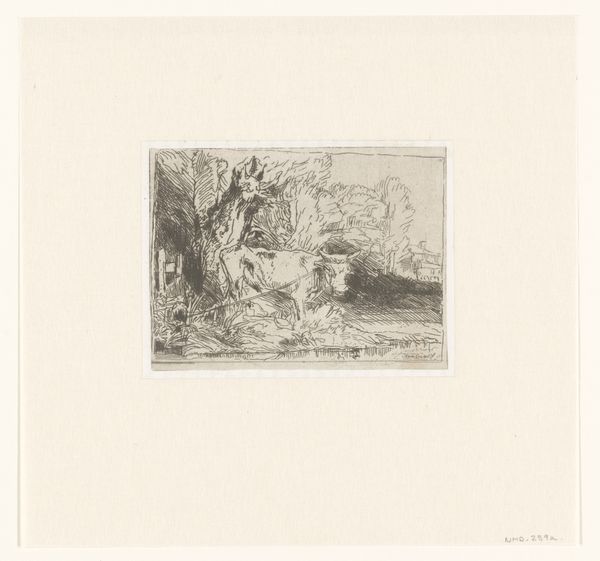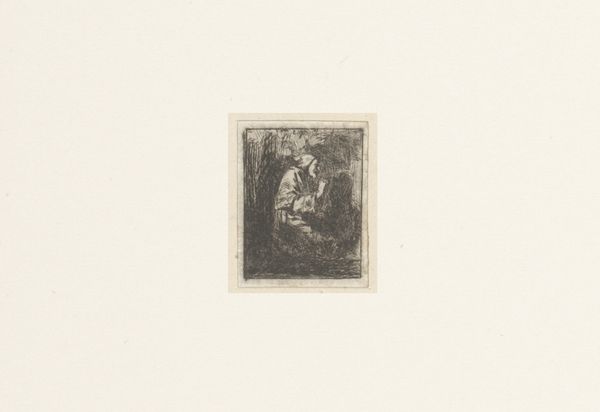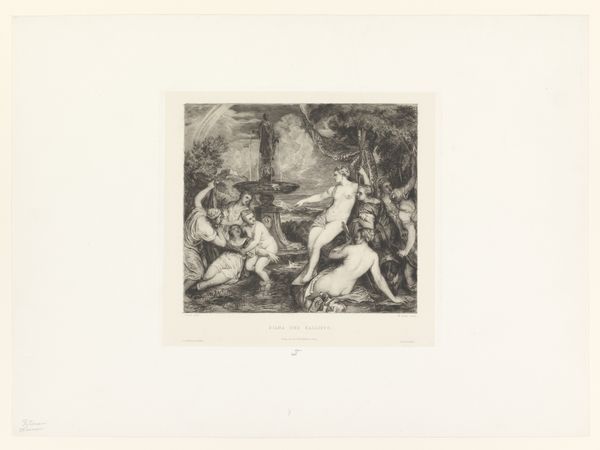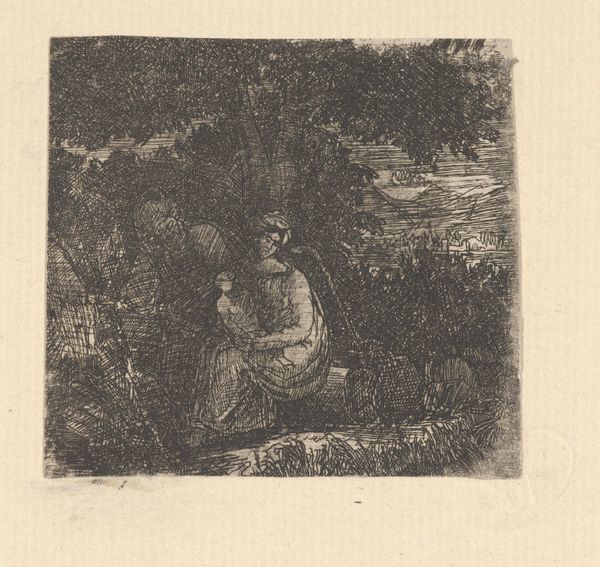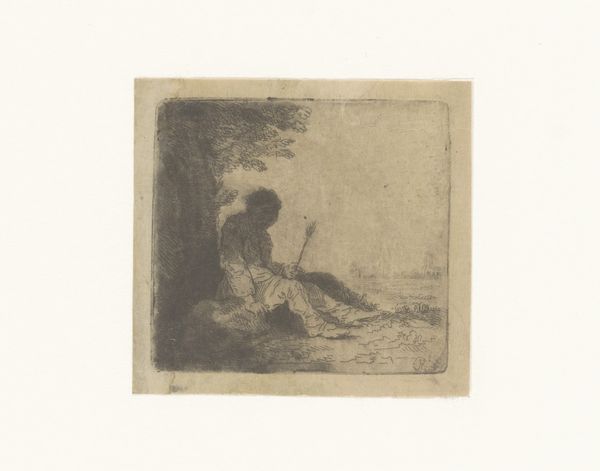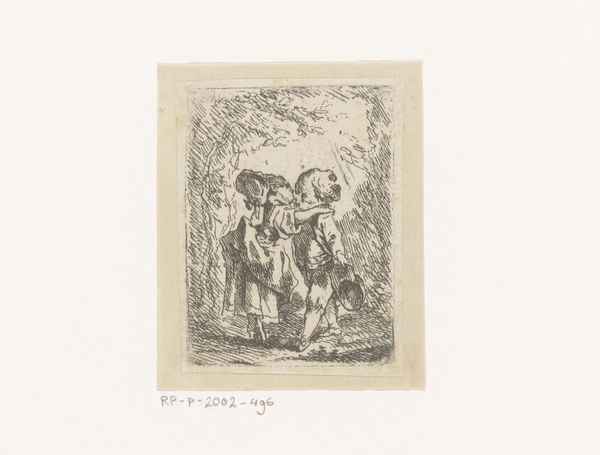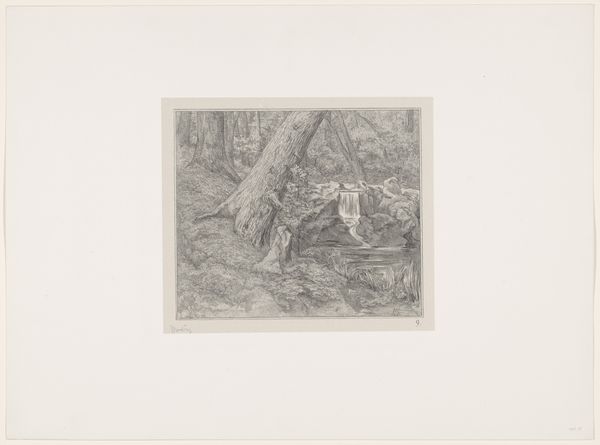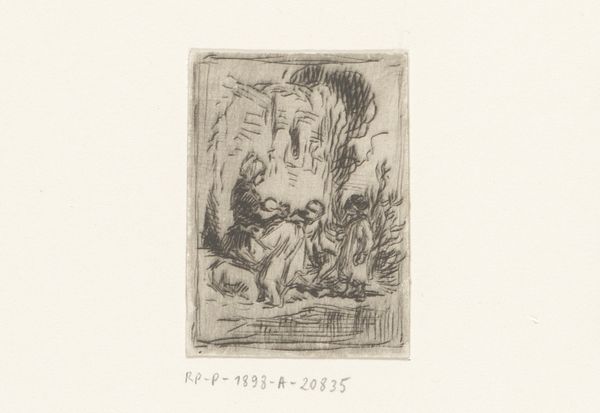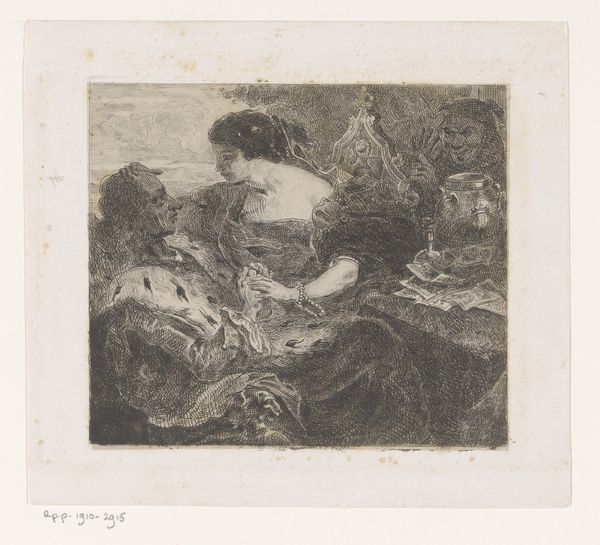
print, etching, paper, engraving
#
narrative-art
#
baroque
# print
#
etching
#
landscape
#
figuration
#
paper
#
genre-painting
#
engraving
Dimensions: height 113 mm, width 140 mm
Copyright: Rijks Museum: Open Domain
Curator: This etching, titled "The flute player ('Het Uilenspiegeltje')" made sometime in the 18th century by an anonymous artist, features an almost theatrical pastoral scene. The mood seems both idyllic and unsettling, wouldn’t you agree? What resonates with you most strongly when viewing this print? Editor: That's a great starting point! The woman and flute player seem self-absorbed, while the presence of the goats and other figure seems almost intrusive in their intimate space. What can we interpret about gender or class within such genre scenes during this period? Curator: Absolutely. Examining the figure with the goats offers critical insight. The composition subtly challenges conventional hierarchies. Genre painting often idealizes the peasantry. I see a simultaneous romanticizing and othering of rural life, creating a space to interrogate social structures. Where do you see elements of social commentary or resistance, if any, within the artwork’s context? Editor: The detail in the woman's dress does strike me as a bit of an elevated presentation for this kind of scene. Curator: Indeed. Consider her dress, perhaps symbolic of prosperity, a rising middle class appropriating aspects of leisure once reserved for the elite. What this could say about power dynamics at the time? How does this scene intersect with burgeoning capitalism and shifting social identities? Editor: That's fascinating. It's making me think about art's role in reflecting and also shaping these changing social narratives. I'd assumed genre scenes offered more transparent insight into everyday life, but there is an additional layer of intention behind it. Curator: Precisely! This print invites a complex reading beyond a surface level. By probing deeper into these socio-political layers, we unravel not just art history but also the very fabric of past societies and how identity, class and gender all become negotiated and asserted in the visual culture of the time. Editor: It makes the image far more complicated, and I am more interested in the piece because of the rich social backdrop that we uncovered. Curator: Exactly, and these sorts of perspectives allow us to truly engage with artwork's multifaceted value, allowing past contexts to shed light on contemporary social justice concerns.
Comments
No comments
Be the first to comment and join the conversation on the ultimate creative platform.


